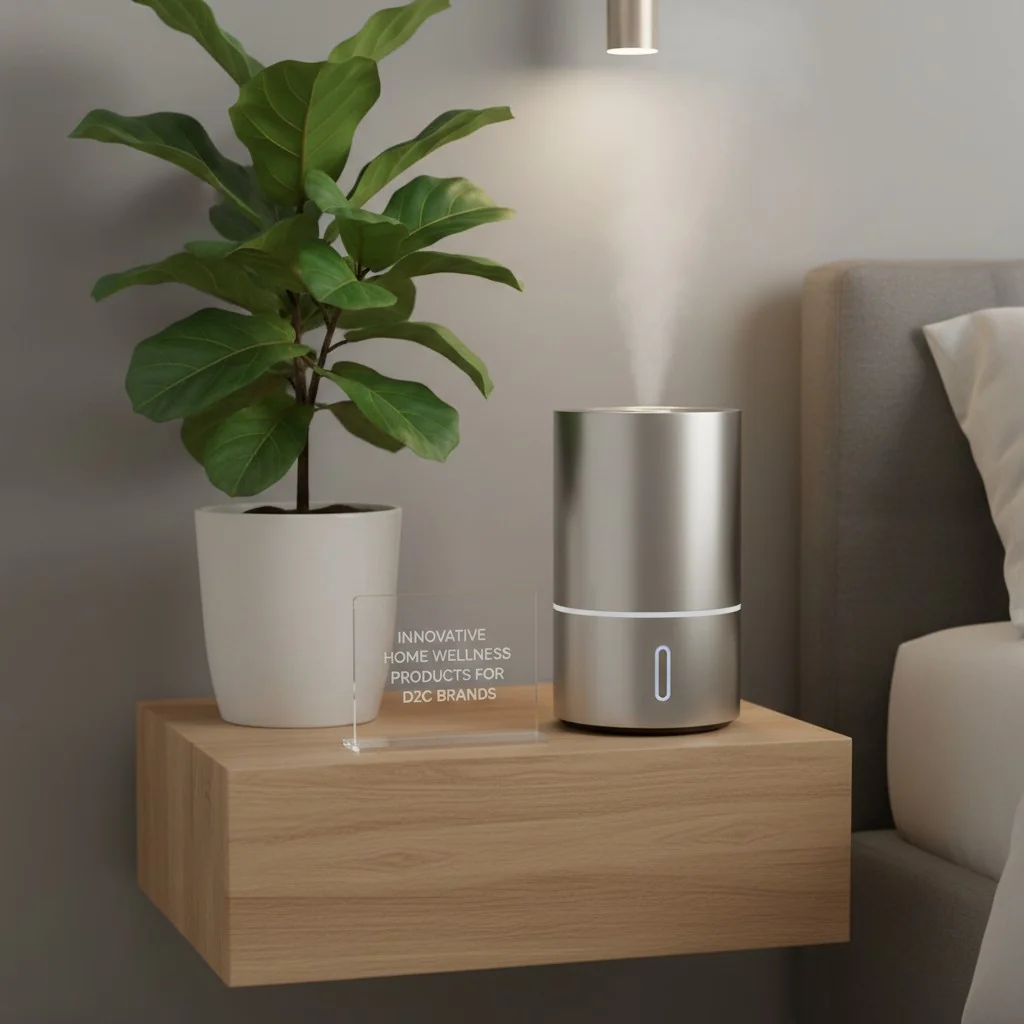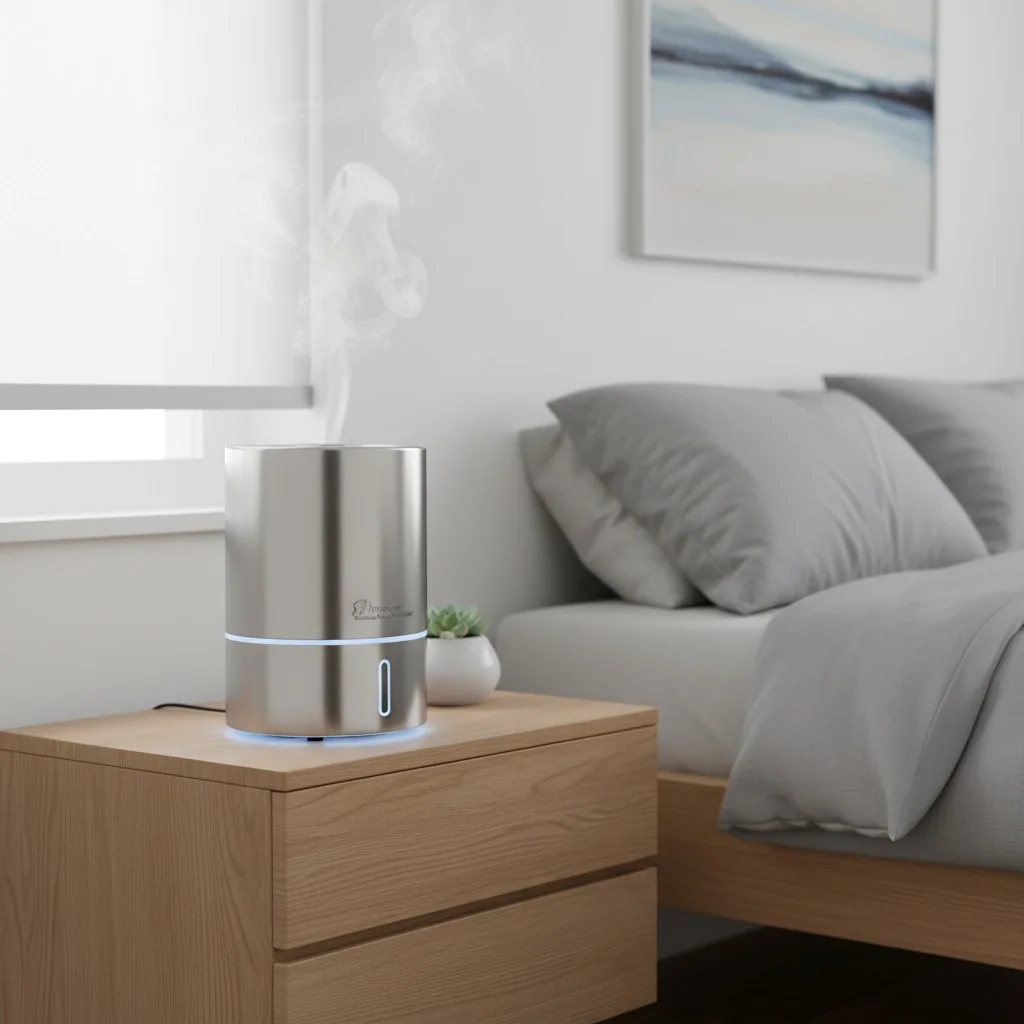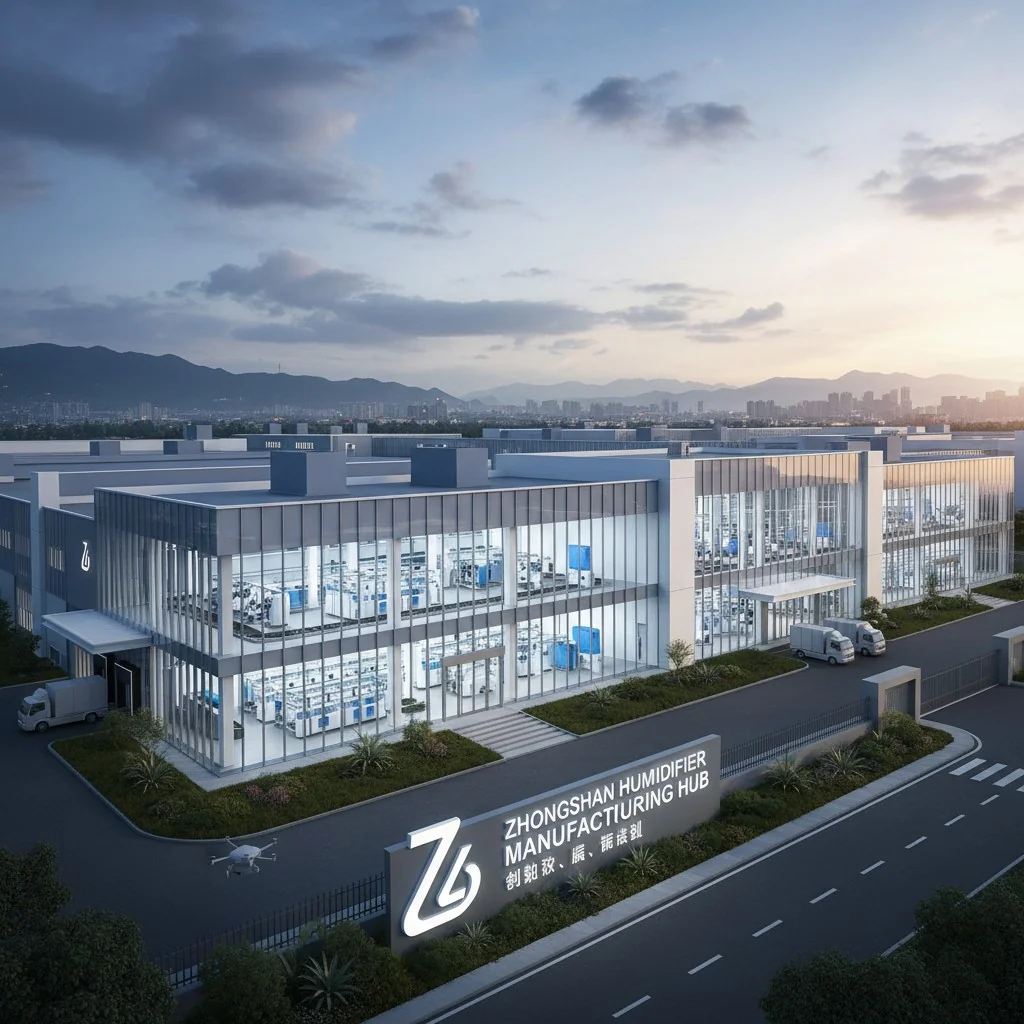
Вы когда-нибудь чувствовали себя запертыми в доме, полном дыма и пыли? CARB-Сертифицированные воздухоочистители решают эту проблему.
CARB-Сертифицированные воздухоочистители очень важны для обеспечения безопасного качества воздуха в помещении. Эти очистители следуют строгим правилам эмиссии, особенно в Калифорнии. Они снижают выбросы озона, что повышает безопасность воздуха. Выбросы значительно снижаются.
Я помню, как впервые узнал о CARB сертификация. Это было как вспышка лампочки. Понимание этих стандартов показало мне, насколько они важны для обеспечения безопасного воздуха в помещениях. Особенно если вы живете в таких строгих местах, как Калифорния. Речь идет не только о соблюдении правил. Речь идет о том, чтобы дышать легко. Это значит знать, что воздух в вашем доме безопасен.
Изучив эти сертификаты, я понял, что они устанавливают стандарты для воздухоочистителей. Эти правила защищают нас от устройств, выделяющих вредный озон. CARB-Сертифицированные очистители обеспечивают душевное спокойствие. Они помогают поддерживать воздух настолько чистым, насколько это возможно при современных технологиях. Качество воздуха действительно влияет на здоровье. Это то, на что я не хочу идти.
Сертификация CARB гарантирует снижение выбросов озона.Правда
Сертификация CARB требует низкого уровня выбросов озона для воздухоочистителей.
Все воздухоочистители по умолчанию сертифицированы CARB.Ложь
Не все воздухоочистители соответствуют строгим стандартам CARB по выбросам.
Почему CARB Важна ли сертификация для воздухоочистителей?
Представьте, что вы дышите свободно, чувствуя уверенность в том, что очиститель воздуха в вашем доме стоит на страже вашего благополучия. CARB Сертификация играет здесь очень важную роль.
CARB Сертификация имеет большое значение для воздухоочистителей. Они соответствуют строгим стандартам по выбросам озона. Это помогает защитить здоровье и действительно улучшает качество воздуха. Калифорния требует такой сертификации при продаже. Она повышает доверие потребителей. Это также повышает доверие к продукту.
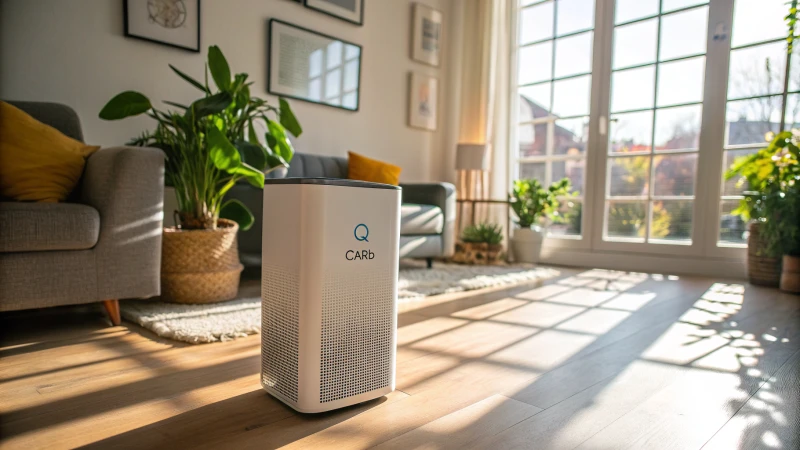
Понимание CARB Сертификация
Я открыл для себя важность CARB сертификации, пока боролась с аллергией и проблемами с дыханием дома. Я чувствовала себя потерянной среди множества продуктов и сомневалась в их безопасности. Затем я наткнулась на значение Калифорнийский совет по воздушным ресурсам (CARB)1 сертификация.
CARB это гораздо больше, чем просто требование правительства. Он показывает, что воздухоочиститель может обеспечить безопасность воздуха в помещении. Он удостоверяет, что прибор не будет выделять вредный озон в вашем доме. Очень важно.
Важность CARB Сертификация
- Охрана здоровья: Покупка CARB-сертифицированный воздухоочиститель - это как свежий воздух, в буквальном смысле слова. Знание того, что мой очиститель соблюдает строгие правила и выделяет мало озона, изменило все к лучшему для здоровья моей семьи.
- Доступ на рынок: Бренды, стремящиеся выйти на американский рынок, особенно в Калифорнии, находят CARB Сертификация очень ценна. Без нее продажа товаров в этом штате невозможна.
| Выгода | Пояснение |
|---|---|
| Гарантия здоровья | Соответствует стандартам безопасности, снижая риск для здоровья от выбросов |
| Доверие потребителей | Повышает доверие к бренду среди потребителей |
| Соблюдение правовых норм | Требуется для продажи в Калифорнии и необходим для маркетинга на платформах |
Процесс сертификации
Достижение CARB Сертификация может показаться сложной, но это проще, чем кажется. Компании часто сотрудничают с сертифицированными лабораториями для проверки продукции на соответствие правилам выбросов. Потратить около $1 000 - это разумный выбор для успеха в будущем - действительно разумный выбор.
Маркетинг и укрепление доверия
Видеть CARB сертификационный знак на воздухоочистителе дает мне уверенность в его безопасности и надежности. Речь идет не только о соблюдении правовых норм, но и о доверии.
Более того, комбинирование CARB сертификация с другими наградами, такими как Energy Star2 или UL листинги еще больше укрепляют репутацию бренда. Эта стратегия не только повышает надежность продукции, но и создает конкурентное преимущество на рынке.
Хотя сертификаты могут показаться простыми правилами, они имеют большое значение для обеспечения чистоты и здоровья воздуха в помещении. А эта уверенность? Совершенно бесценно.
Сертификация CARB является обязательной в Калифорнии.Правда
Сертификация CARB необходима для того, чтобы очистители воздуха могли легально продаваться в Калифорнии.
Продукты, сертифицированные CARB, выделяют большое количество озона.Ложь
Продукты, сертифицированные CARB, проходят проверку на минимальное выделение озона.
Как CARB Сертификация влияет на производительность очистителя воздуха?
Вспомните момент, когда вы хотели купить очиститель воздуха и запутались в многочисленных сертификатах. Со мной такое тоже случалось. CARB Сертификация - это своего рода золотой билет. Она свидетельствует о том, что воздухоочистители не только эффективно, но и безопасно работают.
CARB Сертификация показывает, что воздухоочистители следуют строгим правилам безопасности, особенно в отношении выбросов озона. Это соответствие не только отвечает калифорнийским правилам, но и значительно улучшает работу очистителя. Это делает качество воздуха более безопасным. Действительно безопаснее.
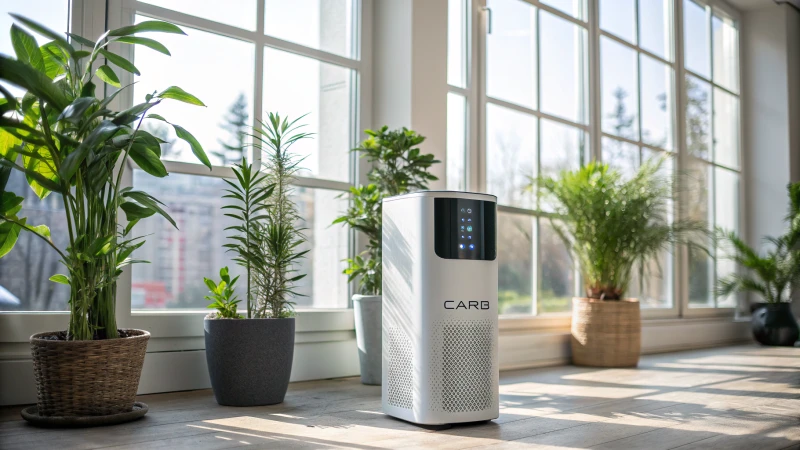
Понимание CARB Роль сертификации
Я помню, как впервые узнал об очистителях воздуха. Технические термины сбивали меня с толку. Потом я нашла CARB сертификация3. Этот сертификат выдается Калифорнийским советом по воздушным ресурсам. Они устанавливают высокие стандарты для очистителей, особенно для тех, которые оснащены ультрафиолетовыми лампами или генераторами озона. Для меня, CARB Сертификация выглядела как печать доверия. Он показывал, что эти устройства следуют важным правилам, особенно в отношении выбросов озона.
Влияние на качество воздуха
CARB-Сертифицированные очистители воздуха выполняют то, что обещают. Они следуют строгим правилам контроля вредных побочных продуктов, таких как озон. Когда я узнал об этом, меня охватило облегчение. Выбирая CARB-сертифицированный продукт означает инвестирование в улучшение качества воздуха в помещении. Это значит дышать легко и спать спокойно.
Укрепление доверия потребителей
Я всегда стремлюсь к душевному спокойствию, особенно в том, что касается здоровья и безопасности. CARB Сертификация дает такое ощущение. Это как надежный друг, ручающийся за продукт. Видя этот значок на таких платформах, как Amazon, я могу быть уверен, что выбираю разумно и безопасно.
Стоимость и процесс
Конечно, получить CARB Сертификация стоит денег - около $1000. Но, как по мне, оно того стоит, если вы хотите выйти на калифорнийский рынок. Производители обычно работают с CARB офицеров или сторонних лабораторий для проведения сертификации.
| Сертификация | Стоимость (прибл.) | Процесс | Преимущества |
|---|---|---|---|
| CARB | $1000 | Электронная почта/ сторонняя лаборатория | Обеспечивает соответствие требованиям, повышает доверие потребителей |
Более широкие последствия
CARB Сертификация - это только один шаг. Другие сертификаты, такие как Energy Star и DOE также помогает очистителям воздуха на рынке США. На мой взгляд, эти сертификаты в совокупности улучшают репутацию продукта и привлекают экологичных потребителей, которым важен не только чистый воздух.
Преимущества маркетинга
Выделение брендов CARB сертификация выделяется на оживленном рынке, а демонстрация этой сертификации в маркетинговых материалах вызывает доверие и убеждает потенциальных покупателей в том, что продукт соответствует высоким стандартам безопасности. Такие компании, как HisoAir4 с помощью этой стратегии можно завоевать авторитет и доверие.
Сертификация CARB является обязательной для всех воздухоочистителей.Ложь
Только очистители с ультрафиолетовыми лампами или генераторами озона требуют сертификации CARB.
Очистители, сертифицированные CARB, улучшают качество воздуха в помещении.Правда
Сертификация гарантирует низкий уровень выбросов озона, эффективно улучшая качество воздуха.
Есть ли другие сертификаты, которые следует рассматривать наряду с CARB?
Вы когда-нибудь чувствовали себя потерянным, пытаясь разобраться в сертификации воздухоочистителей? Многие люди разделяют это чувство! CARB сертификация очень важна. Но существуют и другие важные сертификаты. Они повышают репутацию и надежность продукта. Давайте изучим их!
За пределами CARBОбратите внимание на сертификаты, такие как Energy Star, UL, DOE, CA65 и FCC. Эти сертификаты повышают доверие к вашему продукту со стороны покупателей. Они обеспечивают надежность. Они также свидетельствуют о соответствии важным стандартам. Привлекательность на рынке повышается, если акцентировать внимание на энергоэффективности. Безопасность и выбросы тоже важны. Защита прав потребителей имеет значение.
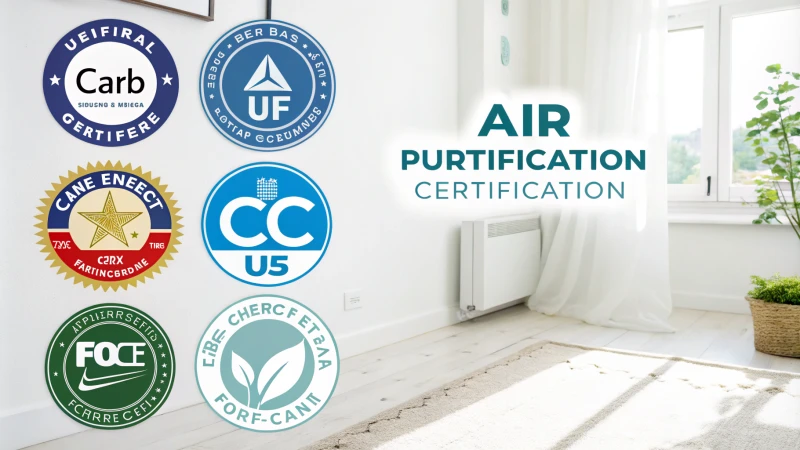
Понимание дополнительных сертификатов
Начинаю свой путь в очистке воздуха, CARB сертификация5 стало необходимым, особенно для того, чтобы привлечь калифорнийских потребителей. Однако вскоре я обнаружил, что выделиться - значит получить больше сертификатов. Они не только показывали, что моя продукция соответствует различным правилам, но и привлекали покупателей, заботящихся об экологии и безопасности.
Energy Star быстро заинтересовал меня. Она служит почетным знаком для тех, кто занимается вопросами энергоэффективности. Осознание того, что наша продукция помогает сократить выбросы углекислого газа в атмосферу, не может не радовать.
Energy Star и ее преимущества
Увидев на нашем продукте знак Energy Star, мы были в восторге. Это было похоже на зеленый свет, говорящий: "Вы делаете добро для планеты!". Для нас, производителей, этот сертификат означает, что наша продукция соответствует строгим стандартам энергопотребления, установленным EPA. Это непросто, но каждый шаг оправдывает себя, когда покупатели, заботящиеся об экологии, выбирают именно ваш товар.
| Сертификация | Фокус |
|---|---|
| Energy Star | Энергоэффективность |
| UL | Безопасность и производительность |
| DOE | Стандарты эффективности |
| CA65 | Безопасность потребителей |
| FCC | Выбросы и коммуникации |
Важность UL Сертификация
Безопасность является главным приоритетом и UL (Underwriters Laboratories) сертификация имеет решающее значение. Я помню, как наши продукты сталкивались с ULжесткие испытания. Нервное, но приятное осознание того, что наши воздухоочистители безопасны для использования. Они охватывают как электрическую, так и механическую безопасность.
Узнать больше о UL стандарты6 относительно вашей продукции.
Расширение охвата рынка с помощью DOE и CA65
Ценный совет: не стоит недооценивать силу DOE соответствие. Речь идет не только о галочках, но и о создании эффективных продуктов, отвечающих современным требованиям к экологичности. CA65 (Калифорнийское предложение 65) также очень важна - она ограничивает содержание вредных химических веществ, обеспечивая безопасность потребителей.
Сертификация FCC: Поддержание контроля выбросов
Сертификация FCC стала для нас важной вехой. Углубившись в контроль излучения, мы убедились, что наши устройства не будут мешать другим. Соответствие нормам здесь выходит за рамки правил и направлено на завоевание доверия потребителей.
Изучите процесс сертификации FCC7 чтобы понять его важность для создания продукта.
Сочетание этих сертификатов с CARBЯ видел, как они повышают авторитет и рыночное обаяние наших воздухоочистителей. Они символизируют не просто соответствие правилам, а качество и доверие, на которые полагаются потребители.
Сертификация Energy Star сосредоточена на безопасности продукции.Ложь
Energy Star фокусируется на энергоэффективности, а не на безопасности.
Сертификация UL подтверждает безопасность и эффективность продукции.Правда
UL гарантирует соответствие продукции стандартам безопасности и производительности.
В чем польза для здоровья от использования CARB-Сертифицированные очистители воздуха?
Представьте, что вы делаете глубокий вдох, будучи уверенным, что очиститель воздуха неустанно защищает ваш дом от опасных загрязняющих веществ. CARB-Именно это обещают сертифицированные очистители воздуха. Это действительно гарантирует более здоровую окружающую среду.
CARB-сертифицированные воздухоочистители приносят пользу здоровью, снижая выбросы озона, улучшая дыхание и уменьшая количество аллергенов. Сертификация проводится в соответствии со строгими стандартами. Внутренние помещения становятся более безопасными для всех. Безопасные помещения для всех.

Понимание CARB Сертификация
Сначала я услышал о Калифорнийский совет по воздушным ресурсам (CARB)8 и почувствовал любопытство по поводу того, что они уделяют особое внимание поддержанию чистоты воздуха. CARB установлены строгие правила для воздухоочистителей, чтобы уменьшить выделение озона. Люди думают, что озон в небе - это хорошо, но вблизи земли он вреден. Он может навредить людям с астмой или проблемами с дыханием. Покупка CARB-Сертифицированное устройство позволяет мне быть уверенным в том, что моя семья дышит более чистым воздухом.
Преимущества низкого уровня выбросов озона для здоровья
Однажды у моего друга обострилась астма из-за старого воздухоочистителя. Это показало мне, почему важно использовать аппараты с низким содержанием озона. Высокий уровень озона усугубляет проблемы с дыханием. CARB-Сертифицированные очистители хорошо контролируют озон. Они помогают поддерживать здоровый воздух в доме.
Уменьшение количества аллергенов и загрязняющих веществ
Аллергия беспокоит мою семью, особенно весной. CARB-Сертифицированные очистители воздуха изменили эту ситуацию. Исследования показывают, что они могут сократить количество веществ, вызывающих аллергию, на 70%. Представьте, что вы снова можете дышать через нос без проблем.
| Загрязнитель | Влияние на здоровье | Сокращение с CARB |
|---|---|---|
| Пыль | Раздражение дыхательных путей | До 80% |
| Пыльца | Облегчение аллергии | До 70% |
| Споры плесени | Снижение воздействия | Значительное снижение |
Оздоровление органов дыхания
Для людей, постоянно испытывающих проблемы с дыханием, чистый воздух имеет решающее значение. Хороший воздухоочиститель помогает уменьшить количество приступов и улучшить здоровье легких. CARB-Сертифицированные модели не допускают попадания опасных частиц в воздух, которым мы дышим.
Гарантии доверия и безопасности
Я искал очиститель воздуха, CARB Сертификация дала мне душевное спокойствие. Это как защитная сетка, которая показывает, что продукт безопасен и хорошо работает. Видеть этот знак означает, что я выбираю что-то проверенное и надежное.
Понимание этих моментов помогает мне выбирать воздухоочистители, которые защищают здоровье моей семьи. Чтобы узнать больше о том, что CARB сертификации качества воздуха, посетите здесь9.
Очистители, сертифицированные CARB, значительно снижают выбросы озона.Правда
Сертификация CARB гарантирует соответствие очистителей строгим стандартам по низкому выделению озона.
Воздействие аллергенов снижается на 50% с помощью очистителей, сертифицированных CARB.Ложь
Исследования показывают, что воздействие аллергенов снижается до 70%, а не до 50%.
Заключение
CARB-сертифицированные воздухоочистители обеспечивают безопасное качество воздуха в помещении за счет снижения вредных выбросов озона, что крайне важно для здоровья и соответствия строгим нормативным требованиям Калифорнии.
-
Узнайте, почему сертификация CARB является жизненно важной для обеспечения безопасности продуктов очистки воздуха. ↩
-
Узнайте, как продукция, сертифицированная CARB, завоевывает доверие потребителей и привлекает внимание рынка. ↩
-
Узнайте о роли CARB в регулировании выбросов и о том, как он обеспечивает безопасность воздухоочистителей. ↩
-
Поймите, как сертификация CARB повышает конкурентоспособность и доверие потребителей к брендам воздухоочистителей. ↩
-
Понимание сертификации CARB поможет вам осознать ее значение в индустрии очистки воздуха. ↩
-
Стандарты UL гарантируют безопасность и надежность, что очень важно для доверия потребителей к вашей продукции. ↩
-
Сертификация FCC предотвращает помехи для других устройств, обеспечивая безопасный уровень излучения. ↩
-
Узнайте больше об организации, устанавливающей строгие стандарты качества воздуха для создания более безопасной среды обитания. ↩
-
Получите более глубокое представление о том, как сертификация CARB влияет на чистоту воздуха в помещении и здоровье людей. ↩


